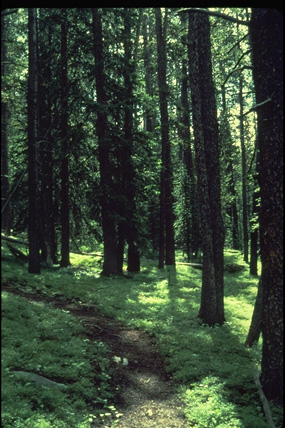
Sue Kost is the self-taught artist behind the amazing pine needle baskets of Montana Needleworks.
Although the process is very time-consuming, Sue finds it relaxing.
Her love for her craft is evident in the results!
Tell us a bit about yourself!
I started sewing clothing for myself while in high school. My Grandmother taught me to crochet and I taught myself to knit. Some time later I worked at a fabric/craft store and added needle crafts (cross stitch, long stitch etc.) to my interests. Then I got a job at a canvas shop and discovered the world of industrial sewing machines...Wow! The machines are awesome and will sew through anything! Throughout my industrial sewing career I've made wall tents, tipis, back packs, soft luggage, boat tops and frames, boat covers and designed many, many custom items. Now my motto is "If it can't be done on an industrial machine, it won't get done".
Who taught you to make these beautiful baskets? Did you take a class?
About five years ago I decided I needed a new hobby, something that didn't take a large investment to get started in. I remembered seeing a pine needle basket at a craft fair several years before and started checking into it. So, I found a book and taught myself.
Where do you gather the pine needles?
Living in the mountains of Western Montana, I have an unlimited supply of Ponderosa Pine Needles on my property. Gathering the needles is probably the most tedious when I have to pick fallen needles from the ground.
The best way is to find a dead tree that has fallen and gather the needles in clumps,
The longer the needles, the better.
The longer the needles, the better.
 |
| callofthewildphoto |
How do you prepare the needles?
If they're to be stored, they go in the freezer for a day to kill any bugs and then into boxes. The needles must be flexible while working with them and the cap ends need to be removed. I pour boiling water over the needles which softens them and allows the caps to be removed more easily. I usually grab as many needles as I think will be needed for a basket and prep them all at once. Throughout the basket making process I keep the needles wrapped in a damp towel and in the freezer during down times to prevent the needles from molding.
(Oh, and by the way, the Ponderosa Pine is Montana's official state tree.)
 |
| nps |
Please explain your process of creating a basket.
These are coiled baskets so you start at the center and work out then up. To make the coils uniform, I use a tubular gauge and keep feeding needles in as I work. I use artificial sinew or nylon thread to stitch the coils together. Once the basket is complete it can be left natural or finished with shellac or bees wax. Using some type of finish gives the basket a bit more stability. I usually finish just the exterior so you can still smell the needles on the inside.
Has anyone ever requested a custom piece?
Tell us about your designs.






I haven't had a custom request yet, but look forward to the possibility.
I've seen many creative and fancy stitches on pine needle baskets and they are very beautiful, but I like to keep my baskets as natural as possible and lean toward the rustic look, using wood and antlers as centers. Sometimes I have a set design idea when I start a basket, but usually I just start and see what shape and size I end up with.
Deer hoof prints are burned into this wood center piece.

Antler is used for the center and lid knob of these baskets:


I love the pinecones on these lids!


Impressive artistry! Gorgeous baskets!
You can find Montana Needleworks here:
You can find Montana Needleworks here:


Wow, Beautifull
ReplyDeleteCould you use crochet thread in place of artifical sinew and nylon thread? Thank you
ReplyDeleteI am teaching myself too.
Your baskets are beautiful.
I agree - aren't they gorgeous? Here's the web address for the Montana Needleworks shop on Etsy: http://www.etsy.com/shop/MontanaNeedleworks
DeleteSusan is just great and I'm sure she would be happy to answer your question. Look on the left side bar and click on "Contact the Shop Owner." :)
Agen Terpercaya
ReplyDelete